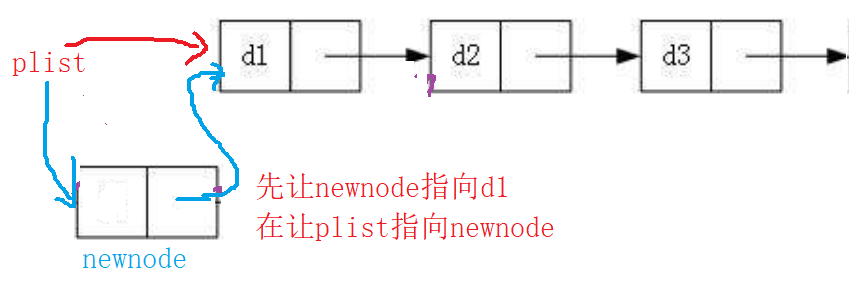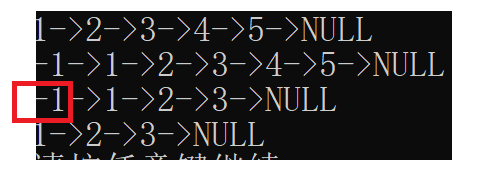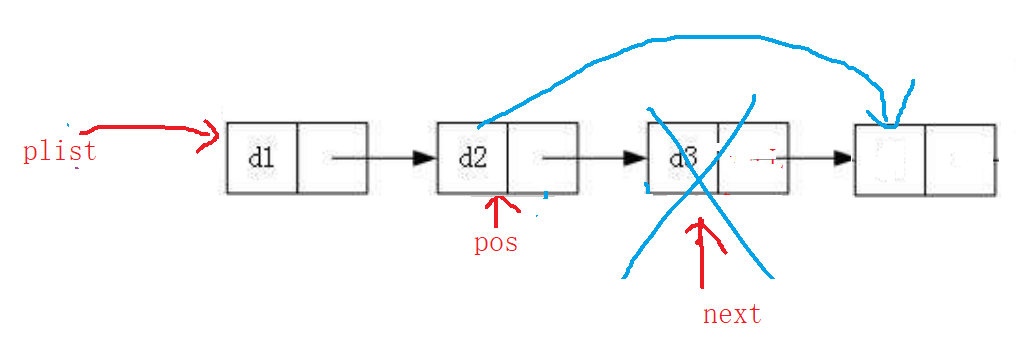Concept of linked list
Concept: linked list is a non continuous and non sequential storage structure in physical storage structure. The logical order of data elements is realized through the pointer link order in the linked list.
Let's start the single linked list

Create a structure first
typedef int SLTDateType;
typedef struct SListNode
{
SLTDateType data;
struct SListNode* next;
}SListNode;
Dynamic application node
SListNode* BuySListNode(SLTDateType x)
{
SListNode* node = (SListNode*)malloc(sizeof(SListNode));
//Judge whether the development node is successful
if (node == NULL)
{
printf("malloc fail\n");
exit(-1);
}
node->data = x;
node->next = NULL;
return node;
}
Tail interpolation of single linked list
How to insert the tail?
The idea of tail interpolation:
1. Conventional tail interpolation: point a plist pointer to the head node and find the following node through the plist pointer. After defining a tail pointer, find the tail node and let the tail node point to the new node
2. If the linked list is empty, point to the new node first and perform tail insertion in

After converting the idea of diagram into code
void SListPushBack(SListNode** pplist, SLTDateType x)
{
assert(pplist);//Address cannot be empty
//The linked list is empty
if (*pplist==NULL)
{
SListNode* newnode = BuySListNode(x);
*pplist = newnode;
}
else
{
SListNode* tail = *pplist;
//Tail finding
while (tail->next !=NULL)
{
tail = tail->next;
}
SListNode* newnode = BuySListNode(x);
tail->next = newnode;
}
}
```c
//Test code
void test()
{
SListNode *plist = NULL;
SListPushBack(&plist, 1);
SListPushBack(&plist, 2);
SListPushBack(&plist, 3);

This is the tail insertion of the single linked list.
Header insertion of single linked list

// Header insertion of single linked list
void SListPushFront(SListNode** pplist, SLTDateType x)
{
assert(pplist);
SListNode* newnode = BuySListNode(x);
//pplist stores the address of plist. Dereference and find plist
newnode->next = *pplist;
*pplist = newnode;
}
SListPushFront(&plist, -1); SListPrint(plist);

The head plug was successful.
Tail deletion of single linked list

Idea of tail deletion:
Define a tail pointer and find the tail. Directly judge whether tail - > next is empty. If it is empty, the loop will end. We directly release tail - > next - > next. When tail - > next = null. There is another node, release and empty it.
void SListPopBack(SListNode** pplist)
{
assert(pplist);
assert(*pplist);//The linked list is empty and cannot be deleted
if ((*pplist)->next==NULL)
{
free(*pplist);
*pplist = NULL;
}
else
{
SListNode* tail = *pplist;
while (tail->next->next)
{
tail = tail->next;
}
free(tail->next->next);
tail->next = NULL;
}
}
Test it
SListPopBack(&plist); SListPopBack(&plist); SListPrint(plist);

Header deletion of single linked list

Header deletion: define a next pointer. First save d1 - > next, and then let plist point to d2. If you don't save, release d1 first, and d2 will not be found.
void SListPopFront(SListNode** pplist)
{
assert(pplist);
assert(*pplist);//The linked list cannot be deleted if it is empty
SListNode* next = (*pplist)->next;
free(*pplist);
(*pplist) = next;
}
SListPopFront(&plist); SListPrint(plist);

-1 is deleted successfully.
Search and modification of single linked list
Find: traverse directly
//Single linked list lookup
SListNode* SListFind(SListNode* plist, SLTDateType x)
{
SListNode *cur = plist;
while (cur)
{
if (cur->data == x)
{
return cur;
}
else
{
cur = cur->next;
}
}
return NULL;
}
If we find it, we can modify it
SListNode* pos = SListFind(plist,2);
if (pos)
{
printf("eureka\n");
}
else
{
printf("Can't find\n");
}
pos->data = 20;//modify
SListPrint(plist);
Let's look for 2 and change it to 20

The single linked list inserts a value after the pos position

Point newnode to d3 and pos to newnode
void SlistInsertAfter(SListNode* pos, SLTDateType x)
{
assert(pos);
SListNode *newnode = BuySListNode(x);
newnode->next = pos->next;
pos->next = newnode;
}
We tested inserting 30 after 3
pos = SListFind(plist, 3);
if (pos)
{
SlistInsertAfter(pos, 30);
}
SListPrint(plist);

You successfully inserted 30.
The single linked list inserts a value after the pos position

Make a next to save pos - > next - > next, and release next
void SlistEraseAfter(SListNode* pos)
{
assert(pos);
SListNode *next = pos->next;
pos->next = next->next;
free(next);
next = NULL;
}
Test the deletion after 1
pos = SListFind(plist, 1);
if (pos)
{
SListEraseAfter(pos);
}
SListPrint(plist);

The previous 20 was deleted.
The single chain list of this article is over!
